Boulders Museum in Minsk
An impressive number of stones are being put together to create a beautiful landscape
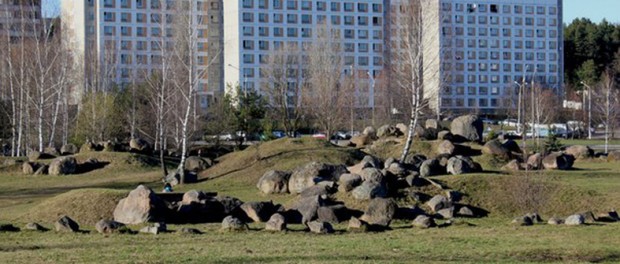
Now we suggest to you a virtual tour of a place which does not yet have the status as an official museum, but which has been considered so for almost 30 years. You won’t see anything like it in any other European capital. Only in Lithuania is there anything resembling the Boulders Museum, but it is only 1/3 the size of Minsk’s Museum. It’s impossible in a space of a single brief article to describe the history of 2,500 boulders, so we will, instead, present some of the most interesting facts about them. What secrets are locked inside these boulders, these natural monuments?
Eastern outskirts of Minsk, in the Uruchcha-2 district, on the corner of Shugaeva St. and Akademica Kuprevicha St. The open-air Boulders Museum is also a park, so thus it “works” around the clock. Most remarkably, the Museum is a scale-model map of Belarus. On the horisontal plane, 2000 meters of distance in Belarus is represented by 1 meter distance in the museum (2000:1 scale). On the vertical plane the scale is 100:1.
The natural features in the open-air museum are not scattered randomly. Rather, the all Museum’s elements — boulders, hills and shrubs — have been arranged into a remarkable open-air “map” of Belarus:
– a group of stones — for a major city,
– each copse of three fir trees represents a regional center,
– paths between threes and boulders are transport arteries or rivers,
– each rise in elevation in the country represented by an artificial hill in the museum,
– and the country borders are represented by low-growing shrubs.
According to historians, the most unique exhibits in the Museum are five hundred huge boulders which are standing on the “map” exactly where the glacier left them.
A chain of tens largest glacial boulders is known as “Boulders Alley”. At the north-western end of the park is located the “Life-Giving Province” exhibition, whick shows the location of the original geological formations. On the opposite end of the park, in the south-east corner is the “Petrographic Collection”, a circular display of the various types of stones and minerals commonly found in Belarus. Many other interesting displays are found throughout the museum park. “The Stone in The Human Life” display presents stone implements used by ancient people in their households and their sacred rituals.
Many of the great stones in the museum are associated with ancient legends, many of the boulders left by the Ice Age were carved with crosses and inscriptions. The stones which keep the name of Boris, the Polotsk Prince, called “Boris’s Stones”.
In former times the cross-engraves boulders, symbols of the new faith in the struggle with paganism, were considered sacred. It was thought that a worshipped could cure any disease by merely touchning one of them.
In 1842 the nobleman Adam Haldakouski bought the land and built a manor house on it. To commemorate and ratify his purchase, he carved the deed to the property on this stone. Signs on the stone: ‘1842’, ‘AH’ (Adam Haldakouski)
According to the acient legend, the Stepanov stone is the boulder that tailor Stepan was magically transformed into. The tailor sewed wonderful clothes for his neighbors for the whole life, despite of the grave illness – a paralysis. People brought him the material and then picked up finishes clothes. Stepan completely petrified when one customer decided to make fun and ordered a “neither this nor that”. The tailor’s beloved Vella found him pertrified, and began to cry and her tears became the Vilia River. Ancient people also believed that men and women who angered the gods were turned by them into boulders, and if you struck or cut these stones, they would bleed.
The “Sledoviki”(“Footprinted”) Boulders are called so because of the footprints on the surface. In some cases, odd features of a stone were considered as “devil’s marks” or “traces of the devil”, in other cases, as “God’s footprints” or “signs of Christ’s foot”. A footprint found on the stone near Slutsk was thought to belong to St. Nicholas. It’s clear that the “good” stones were worshiped, and the “bad” ones avoided at all costs. Our forefathers believed in the healing power of holy boulders. In some cases it was enough to merely touch the sacred stone. In other cases it was necessary to scrape the stone and use the powder as medicine. Another effective medicine was the rainwater that collected in the boulder depressions. But punishment and misfortune followed hard after those who tried to use holy stones for personal gain.
Boulders which remind millstones were actually used as altars. For example, an enormous stone called “Grandfather” found on the shore of the Svisloch river near the Dinamo stadium was once the center of a pagan temple. Astonishingly, this pagan temple endured for more than 1,000 years, and was torn down only in the beginning of the 20th century. By the way, the “Grandfather” stone has medicinal properties, and even now people leave coins, paper money and candies under this immense stone.
Large stone crosses, boulders with mysterious symbols and text labels — cold forbidding blocks — they will not leave you indifferent. At the Boulders Museum one can learn more about their secrets and legends!
Funeral stones:
There is no charge to visit the open-air Boulders Museum park, located on the eastern outskirts of Minsk, in the Uruchcha-2 district, at the intersection of Shugaeva St. and Akademica Kuprevicha St.
Written material prepared by Alexandra Matkova.
Photos by Eugene Latsapnev.

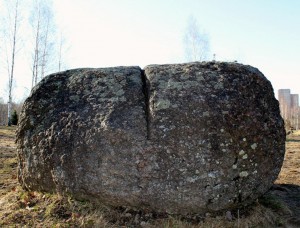

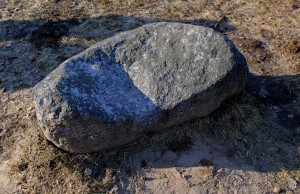
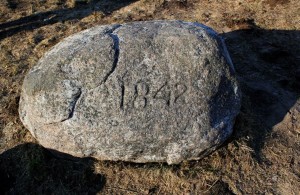
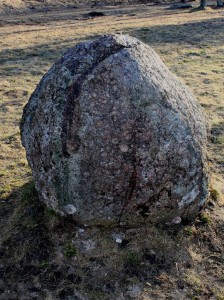
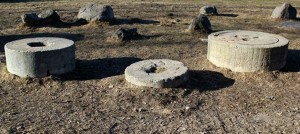





Leave a comment